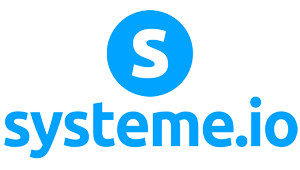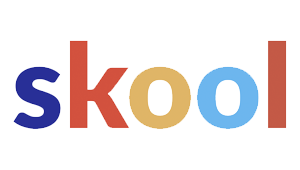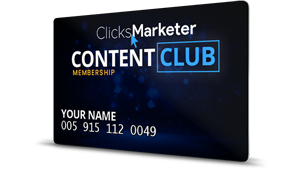Expanding a business internationally isn’t just about showing up in new markets—it’s about being visible where people actually look. Bing Places gives businesses a shot at managing their presence in different regions, but just tossing up a basic listing won’t cut it.
Optimizing Bing Places with multi-language support and accessibility best practices makes your info more accurate, inclusive, and discoverable worldwide.

A lot of companies miss how much language, culture, and accessibility affect whether customers actually engage with listings. Sure, a business might pop up in search, but if the content feels off or hard to use, people just move on.
Directly addressing these factors goes a long way toward building trust and removing the weird little barriers that keep customers from taking action.
Let’s get into how to set up Bing Places for international businesses, nail down multi-language strategies, adapt content for local cultures, and bake in accessibility best practices.
We’ll also peek at some technical SEO moves and ongoing management tricks to keep listings sharp and effective everywhere.
Setting Up Bing Places for International Businesses

Businesses with a global footprint need to set up accurate profiles, verify ownership, and tweak listings for local languages. Getting this right means customers find consistent info, and search engines serve up the right language for the right folks.
Account Creation and Verification
First things first: you’ll need a Microsoft account (or just use one you’ve got). Bing Places won’t let you do much until you’re logged in.
Once you’re in, claim or add your business by plugging in the name, address, and phone.
Verification is a must. Usually, Bing mails a PIN postcard to your business address, but sometimes you can verify by phone or email, depending on your country.
Unverified listings stay hidden, so don’t skip this step.
If you’ve got a bunch of locations, the bulk upload tool is a lifesaver. Just upload a spreadsheet, and you’re off—way faster, and your info stays consistent.
Double-check that your data matches what’s on other directories; mismatches can cause headaches.
Keeping your account accurate and verified isn’t just for show—it builds trust and keeps random people from messing with your listing.
Business Information Localization
Localized info is what makes your listing actually useful to people in different markets. This means translating your business name, description, and categories into the right languages.
Don’t let your Bing Places listing say one thing and your website say another—consistency is everything.
Address formats, phone numbers, and business hours should fit local standards. Time zones, holidays, even the way you write your phone number—these little details matter.
A CMS that supports multilingual sites can help you wrangle translations and keep your site and listings in sync.
That way, you’re not scrambling to fix mistakes after the fact.
Localization isn’t just about language; it’s about making sure people actually get what you’re offering, no matter where they’re from.
Choosing Supported Languages
Bing Places lets you use several languages, but don’t go wild. Too many, and it’s chaos; too few, and you miss people.
Pick languages based on where your customers are and what your website already supports.
If your site is in Spanish and English, your Bing Places should be, too. That way, users aren’t thrown off when they click through.
Make sure translations are actually good—machine tools are okay for basics, but for business descriptions, get a pro.
Here’s a quick way to keep track:
| Language | Website Content Available | Bing Places Enabled |
|---|---|---|
| English | Yes | Yes |
| Spanish | Yes | Yes |
| German | No | No |
Match your supported languages with your real website content. That keeps things clean and avoids confusion for your customers.
Multi-Language Optimization Strategies

If your business spans countries, your online presence has to support multiple languages in a way that’s actually user-friendly. It’s not just about plugging in translations; navigation and content structure matter, too.
Implementing Language Switchers
A language switcher is a must. Make it easy for users to pick their language—stick it somewhere obvious, like the header or footer.
Use language names, not flags. Flags get confusing fast.
Make sure the switcher is on every page, so users can swap languages without getting lost.
If someone’s looking at a product page in English, switching to Spanish should land them on the same product, not just the homepage.
Each language needs its own URL structure, like:
- example.com/en/
- example.com/es/
- example.com/fr/
This isn’t just good for users—it helps search engines figure out what’s what.
A solid language switcher makes life easier for everyone.
Selecting Translation Methods
You’ve got two main choices: machine translation or human translation.
Machine is fast and cheap—good for big catalogs or technical docs. But, honestly, it’s not great for marketing or anything that needs a real human touch.
Human translation gets you accuracy and the right vibe. A lot of businesses do a mix: run machine translation first, then have a pro review and polish it.
Translation management tools help keep everything organized. They track updates, cut down on mistakes, and keep your brand language consistent.
If you want your multi-language site to actually make sense, invest in a solid translation workflow.
Managing Duplicate Content
Multi-language sites can accidentally create duplicate content if you’re not careful. Search engines might see your translated pages as copies and ding your rankings.
Use hreflang tags to show search engines which page is for which language and region. That way, users get the right version.
Be careful with canonical tags. Don’t accidentally merge different language pages.
Give each translation its own unique URL. Regularly audit your site to make sure everything’s being indexed properly.
It’s a bit of a hassle, but it keeps your SEO healthy and your users happy.
Localization and Cultural Adaptation
Localization’s more than just swapping out words—it’s about fitting in with the local culture while keeping your brand recognizable.
Addressing Cultural Nuances
Culture shapes how people see info, images, even colors. What works in one country might totally flop in another.
Hand gestures, symbols, and date formats can mean wildly different things depending on where you are.
Market research is your friend here. Dig into how people behave and what they expect.
Adjust your messaging—tone, formality, even product descriptions—to fit local norms.
You might need to tweak things like:
- Currency and measurement units
- Local holidays and seasonal promos
- Time zones and business hours
Getting these details right makes your listing feel trustworthy and relevant, not just another generic business.
Maintaining Brand Consistency
You want to localize, but you also want people to recognize your brand anywhere. That’s a tricky balance.
A style guide helps. Lay out your approved logos, colors, and voice so everyone’s on the same page.
Visuals should be consistent, but sometimes you’ll need to tweak a slogan or catchphrase to fit the local mood.
Keep internal communication open and give teams clear guidelines, but leave a little room for flexibility.
Adapting Marketing Materials
Marketing materials are usually where localization gets the trickiest.
Text, images, and formats need to match how local consumers prefer to communicate.
Some audiences like it short and sweet; others want all the details.
Visuals need a second look too. Photos should reflect local people, clothing, and places.
If your images feel off, your campaign might flop.
Here’s a basic process:
| Step | Focus Area | Example |
|---|---|---|
| Research | Consumer behavior | Figure out how people like to be sold to |
| Adapt | Language and visuals | Change up slogans, images, layouts |
| Review | Local feedback | Test with native speakers before launch |
Following this flow keeps your marketing sharp and relevant, no matter the country.
Accessibility Best Practices for Global Audiences
Serving international users means thinking about language direction, device compatibility, and easy navigation.
These factors keep your content readable and your layouts functional, no matter who’s looking.
Supporting Right-to-Left Languages
Languages like Arabic and Hebrew read right-to-left, so your site’s layout needs to flip accordingly.
Set the HTML attribute dir="rtl" where it’s needed—otherwise, your text and menus get messy fast.
Test forms, dropdowns, and tables to make sure everything flows naturally from right to left.
Don’t forget icons and arrows. If your “next” button still points right, users will get confused.
Ensuring Responsive Design
Responsive design isn’t optional anymore, especially for global businesses.
Many users, especially abroad, are mobile-first. Your site needs to look good on any device.
Use flexible grids, scalable images, and CSS media queries. Test on real devices to catch weird overlaps or broken layouts.
Make sure buttons are big enough for fingers, and menus are easy to tap.
A smooth, responsive design keeps people from bouncing off your site.
Improving User Experience
Fast, clear, and easy—that’s the goal.
Pages should load quickly. Ditch unnecessary scripts or giant images that slow things down.
Navigation should be straightforward. Use clear labels, fix broken links, and make sure users can find what they need without digging.
Breadcrumbs and simple menus help people keep their bearings.
Test with screen readers and keyboard navigation to spot any accessibility hiccups.
Fixing these issues makes your site usable for everyone, not just the average user.
SEO and Technical Enhancements for Multilingual Listings
Multilingual SEO isn’t just about translating keywords. You need a solid technical setup to boost visibility and make sure users land on the right version of your page.
Using hreflang Tags
Hreflang tags tell search engines which language and regional version of a page to show.
Without them, people might end up on the wrong language page and bounce right off.
Each tag should specify both language and region, like:
<link rel="alternate" hreflang="en-us" href="https://example.com/en-us/" />
<link rel="alternate" hreflang="fr-fr" href="https://example.com/fr-fr/" />
Make sure every page references all the others, including itself. That forms a complete set.
Missing or incorrect hreflang tags can mess up your rankings. Use tools like Google Search Console or Bing Webmaster Tools to double-check your setup.
Conducting Keyword Research
Keyword research for multilingual SEO isn’t just “translate and go.”
A phrase that’s hot in English might not even register in Spanish or Japanese.
Use tools like Bing Keyword Planner, Google Keyword Planner, or other platforms to get local data.
Start with a list in your main language, then work with native speakers or pros to adapt and validate terms for each market.
Check search volume and competition—don’t assume a word-for-word swap will work.
This way, your content actually matches what people are searching for, and you’ll get more organic traffic and engagement.
Optimizing Sitemaps for Multiple Languages
Sitemaps are like friendly guides for search engines, helping them find and index your multilingual pages without missing a beat. Each language version should have its own URL, and adding hreflang annotations to your XML sitemaps makes things even clearer.
A multilingual sitemap might look a bit like this:
<url>
<loc>https://example.com/fr-fr/</loc>
<xhtml:link rel="alternate" hreflang="en-us" href="https://example.com/en-us/"/>
<xhtml:link rel="alternate" hreflang="fr-fr" href="https://example.com/fr-fr/"/>
</url>
If you keep your sitemaps up to date, search engines will usually pick up new content more quickly. Submitting them right through Bing Webmaster Tools or Google Search Console can speed up crawling, too.
Ongoing Management and Support
Staying visible on Bing Places isn’t a one-and-done job—it takes regular attention to details like content accuracy, translation quality, and how you’re connecting with your audience. Businesses with a global footprint need to coordinate updates, keep language consistent, and make sure their communication channels aren’t gathering dust.
Content Updates and Synchronization
Business listings can change a lot—think new hours, updated services, or a fresh phone number. If Bing Places isn’t synced with your multilingual site, customers might get conflicting info, and that’s just not good for anyone.
A structured update process is a lifesaver here. Using a content management system (CMS) or a scheduling tool can help you roll out updates everywhere at once.
It’s smart to hand off specific update tasks to particular team members. When you’ve got a clear workflow, updates on Bing Places, your websites, and even customer support tend to happen together, not in a messy scatter.
For companies with lots of locations, a simple update log can keep everyone on the same page:
| Update Type | Responsible Team | Frequency | Notes |
|---|---|---|---|
| Business Hours | Local Manager | Weekly | Verify holiday changes |
| Contact Details | Marketing Team | Monthly | Sync with multilingual sites |
| Promotions/Offers | Regional Lead | As needed | Align with campaigns |
Translation Review and Quality Assurance
Getting translations right is non-negotiable for multilingual sites and Bing Places listings. Sure, automated tools are handy, but there’s just no substitute for a human translator who gets the context and tone.
A translation management system (TMS) can really take the pain out of coordinating updates in several languages. It tracks revisions, delegates tasks, and helps keep your terminology consistent.
Quality checks shouldn’t be rushed. Ideally, you’ll want:
- A first draft from a pro translator
- A second look by another translator
- Final approval—maybe even with feedback from customer support
Regular audits of your translated listings can catch cultural missteps or legal slipups before they become a problem. Businesses that put in the effort here tend to avoid embarrassing mistakes and keep their reputation strong in every market they serve.
Leveraging Social Media and Influencers
Social media platforms add another layer of visibility for Bing Places listings. Linking updated profiles with Facebook, Instagram, or even LinkedIn helps reinforce consistent branding—plus, it just looks more professional.
Influencers can really extend your reach by sharing location details and services in local languages. Just make sure you’re picking influencers with the right audience, not just the biggest follower count.
Customer support teams ought to keep an eye on social channels for feedback tied to Bing Places data. If someone asks about hours, services, or accessibility, a quick, friendly reply builds trust and clears things up fast.
Coordinating updates between Bing Places, multilingual sites, and social platforms is key. That way, customers get accurate info no matter where they’re looking.



